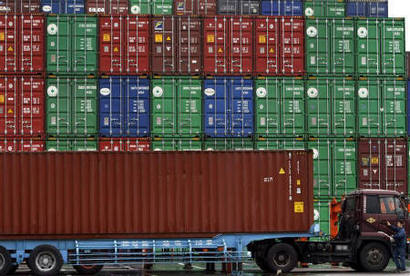As they explain, the main objective of a crisis round would be:
to moderate the level of ambition in some policy areas and temporarily raise it in others. It would not seek new liberalization but aim to bind, for a fixed period of time, say three years, the current level of openness across the board in the WTO.
For developing countries, the aim would be to bind all tariffs in industry and agriculture as well as restrictions in services at currently applied levels. For industrial countries, the aim would be to bind current levels of subsidization in agriculture, current levels of aid to industry (including that handed out in the current crisis), and current levels of access in cross-border trade in services (the latter would head off the temptation to reduce outsourcing). For both sets of countries, to reduce the threat of antidumping actions, there would be an effort to raise the threshold for such actions (by amounts to be negotiated).
They also urge agreement on a faster WTO dispute settlement.
Such a round could only happen at the behest of the new G20. But the G20’s agenda is already crowded: they need to follow up their agreements on economic stimulus and new regulations for their financial systems as well as to help devise an acceptable way to limit climate change. Under such pressure, they are unlikely to agree to replace the Doha Round with a new approach.
While a crisis round is not likely to happen, the proposal is welcome: it is likely to help accelerate an early, and not overly ambitious, conclusion to the Doha Round and then to help reinvent the WTO’s approach to future negotiations.
Recent rounds have allowed themselves to be held hostage to vested producer interest to sustain protection of some sensitive products which account for a small and shrinking share of international trade. Inadequate attention has been paid to the way nominal liberalization can be subverted in WTO-consistent ways.
The crisis round proposal serves to remind that us that the fundamental objective of the WTO is to create a confident and predictable trading environment.
Once the Doha Round is finally concluded, the WTO should break away from the self-imposed constraint of seeking a single undertaking on a wide range of issues.
As Mattoo and Subramanian noted in a 2008 article in Foreign Affairs, the Doha agenda has focused on further limited liberalisation of bound border barriers on trade in goods. These barriers are no longer the strategic constraints to international economic integration. The time has come to move on to limiting uncertainty about the way existing rules and disciplines will be applied as well as to address new issues such as food, energy, and economic security. If work on these issues is held hostage progress on old issues, more and more action will shift to the negotiation of discriminatory preferential trading arrangements.
Mattoo and Subramanian also call for variable geometry. This is also welcome. It could avoid progress on issues being held hostage by the most recalcitrant. It should be possible for governments who are genuinely interested in dealing with particular issues to initiate new plurilateral negotiations which can subsequently be extended to new multilateral undertakings.
It should be possible to build on the useful precedents of the plurilateral protocol of government procurement and the WTO information technology agreement. In addition to a future round to reduce the scope for WTO-consistent protectionism, it should be possible to initiate work on some other matters such as:
- Negotiations on trade in services which could lead to an agreement which consolidates the gains which are being made in PTAs.
- A plurilateral agreement on international investment.
- The information technology agreement and the ongoing work towards free trade in environmental products could lead to an agreement to immunise all new products from rent-seeking protectionists.
- Seeking consensus on limiting new protectionism as part of the negotiations to limit greenhouse gases in the atmosphere.
If the G20 process can gain momentum and legitimacy, it should soon be able to initiate such focused negotiations in the WTO.

